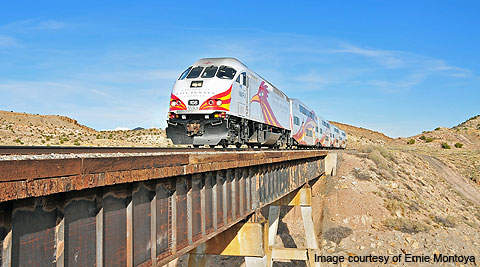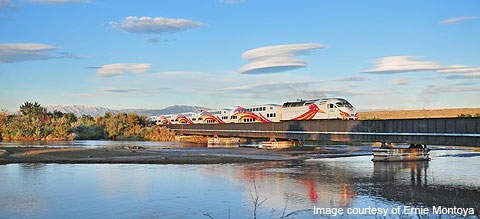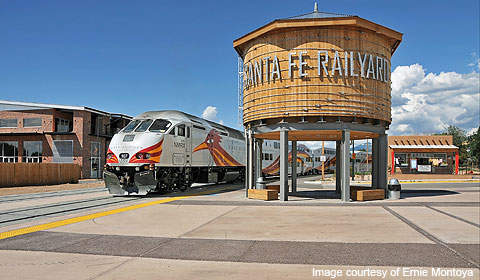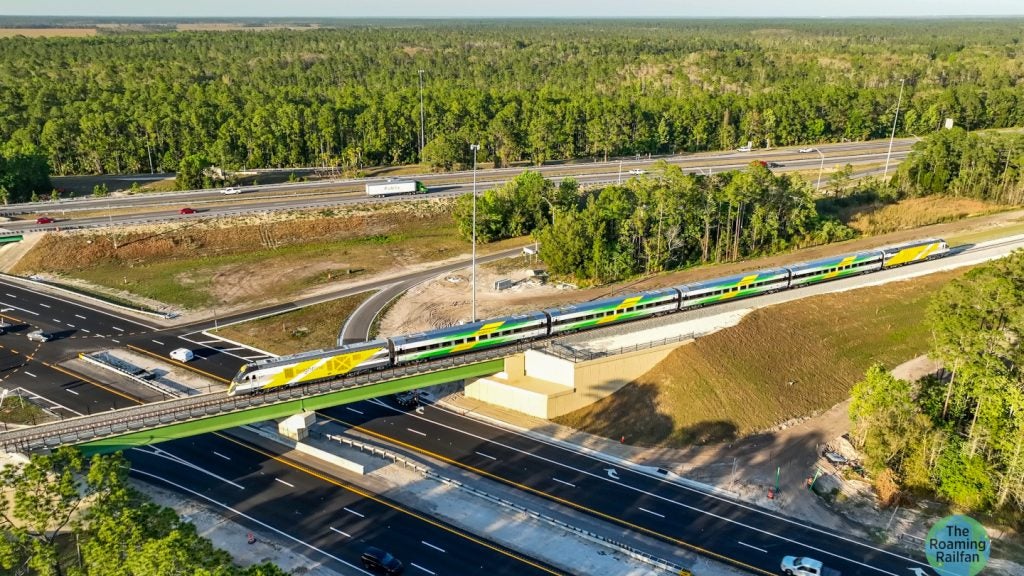The Albuquerque-New Mexico Express Railway, also known as the Rail Runner, is a 156km-long commuter rail service system. Its name was derived from the cartoon show featuring Mexico’s state bird, Road Runner.
The rail system serves the areas between Albuquerque and Santa Fe, in New Mexico. It is operated by the New Mexico Department of Transportation (NMDOT) and the Mid Region Council of Governments (MRCOG).
The project was constructed in two phases. Phase 1 is complete and began service on 14 July 2006. Phase 2, the extension of the Santa Fe Line, became operational on 17 December 2008. The total cost of the project was $385m, of which $135m was allotted for phase 1 and the rest for phase 2.
By June 2009, the daily average ridership of Rail Runner was 4,500 passengers. The service is currently operated on weekdays with eight round trips between Albuquerque and Santa Fe and five round trips between Belen and Albuquerque. Extra trains are operated on week days during the peak hours.
Rail Runner
The Rail Runner express was introduced to ease the congestion on Interstate-25 (I-25), which connects Albuquerque and Santa Fe. More than half of Mexico’s population lives in Central Mexico where Santa Fe and Albuquerque are located. Albuquerque is the largest city and the economic hub of New Mexico. Since housing is expensive in Santa Fe, people are forced to travel from Albuquerque to Santa Fe for work.
The project was in the planning phase for over a decade until the New Mexico Governor took charge of it in 2003. The project received funding from the federal agency, Congestion Management and Air Quality, which continued until 2009. At present the project receives funding from the state bonds and transit tax revenues.
Ground-breaking of the project took place on 30 October 2005. Negotiations were carried out at the same time to give the Rail Runner the right-of-way priority over freight trains on the Belen-New Mexico corridor.
The Rail Runner initially served three stations at Downtown Albuquerque, Los Ranchos and Sandoval County.
On 11 December 2006 a new station was opened at Los Lunas, between Downtown Albuquerque and Belen at the southern end. Belen opened to the public on 2 February 2007.
In April 2007, two more stations were opened at Bernalillo County and Downtown Bernalillo. Few months later, on 17 December 2008, Isleta Pueblo located between Belen and Bernalillo County was opened. On the same day, the line extension to Santa Fe became operational serving the South Capitol and the Santa Fe Depot stations in the north.
The latest station on the route, Kewa Pueblo, opened on 22 March 2010. It was the first station to be constructed using the $6.2m state stimulus fund.
Rail Runner uses the already existing rail track from Bernalillo to La Bajada in Santa Fe and shifts to the new five mile track at CP Madrid. It then shifts to the I-25 median at CP Hondo in Santa Fe and again runs on the improved Santa Fe southern railway track from I-25 to the terminal at the Santa Fe Railyard.
Infrastructure
The Rail Runner has its own power production unit at South Capitol. It is a photovoltaic power plant that provides 85% of the electricity needed to operate the trains. It was built due to the known power shortage in the state.
All the stations on the Albuquerque-New Mexico Express Rail route have shuttle and vehicle parking facilities.
In June 2010, the US Department of Transportation granted $6.72m to build Montaño Inter-modal Centre to ease the traffic on the Montaño Bridge.
In addition, the rail line also received $2.4m from the American Recovery and Reinvestment Act to construct a footbridge at the Belen Rail Runner station to provide safe and easy access to the downtown area of the city.
Rail Runner rolling stock
All the trains have a top speed of 180km/h, but are expected run at a speed of 127km/h on the standard 1.435mm gauge.
There are nine Motive Power diesel-electric locomotives operating on the push-pull configuration.
The Rail Runner has four Bombardier bi-level passenger coaches and nine Bombardier bi-level cab cars with seating capacities of 151 and 141 passengers respectively. Each of the cars has a standing room for 60 passengers. Toilet, water fountain, bicycle and wheel chair parking facilities are available in all the coaches.
Albuquerque-New Mexico express rail future
Sandia Pueblo, the last planned station of phase 1, and the Zia Road station, the last planned for phase 2, are yet to open. While the Zia Road construction is complete, it has not yet been opened due to legal issues with the adjacent land. The Sandia Pueblo station broke ground in September 2009 and is still in construction.
A new station in Albuquerque, on the Montaño Road, which lies between Downtown Albuquerque and the Los Ranchos stations is also in the planning stage. It is a part of the MRCOG’s 2030 Metropolitan Transportation Plan.
A proposal to extend the Rail Runner services to Las Cruces and El Paso in South is being considered by the US House of Representatives.













